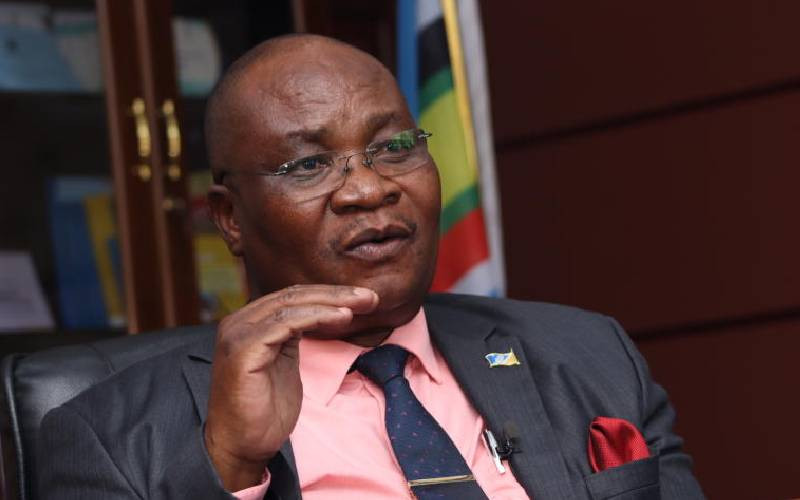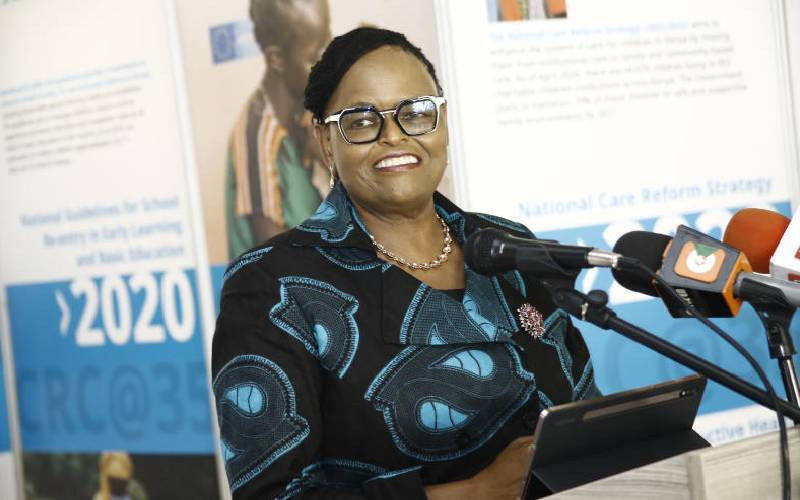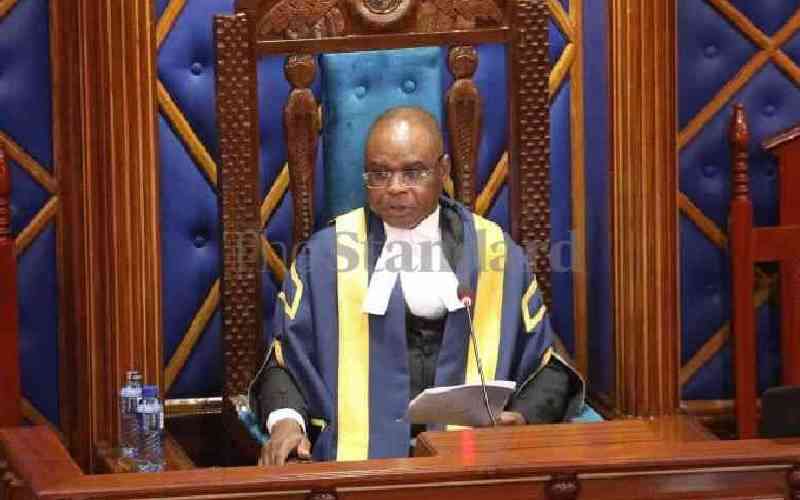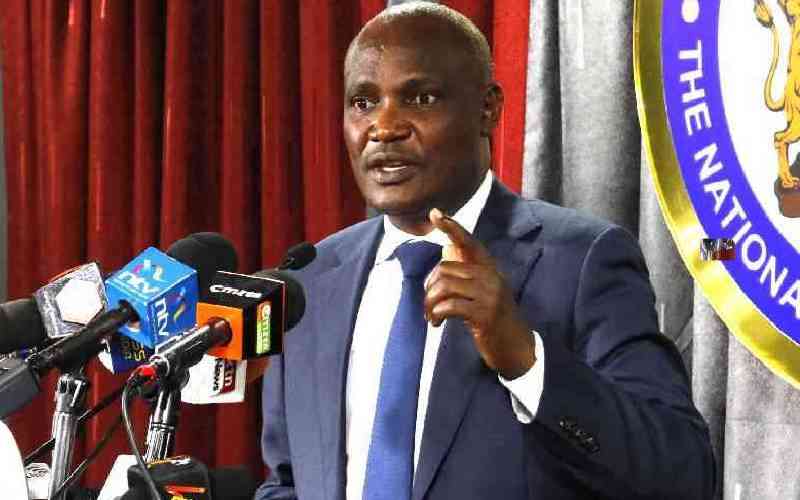
DusitD2 hotel complex stands majestically five years after the terror attack that claimed the lives of 25 people and left scores injured.
Behind the building's walls and glasses, however, are painful memories and lessons.
To some, the 14 Riverside Hotel complex is a painful symbol of the loss of innocent lives and others that were maimed. It is also a testament to the heroic acts of Kenyans and security agencies that worked to trace the five terrorists, their associates, facilitators, financiers and sympathizers.
Some of the enablers such as Mire Abdullahi are today facing the long arm of the law.
In a major win for the government, Mire admitted last year to four charges, including cyber terrorism. Mire was providing internet services through kit serial number 259364 VSAT for the coordinators of the five terrorists.
Further, it is a constant reminder that terrorism does not pay - it is a pain that will not go away soon.
So is the story of the wife of DusitD2 attack mastermind Ali Salim Gichunge.
When the anti-terror police and National Intelligence Service (NIS) dug into Gichunge's past, they found that he was married to Violet Kemunto Omwoyo. She is also known as Khadija Mahmoud.
Kemunto was also a planner of the terror attack.
Perhaps today, Kemunto would have been a television siren or a prolific newsprint journalist, having trained in the noble profession. Maybe, since she had a Public Relations work stint in a government institution before she met Gichunge, her life would be about crisis communication among others for pay.
Today, she passes her time as a language teacher, tutoring children linked to Al-Shabaab.
Kenya security agencies say Kemunto lives a life of squalor in Jilib Somalia where she escaped before the attack she had taken part in planning on the DusitD2.
Kemunto is a poster girl of how deception of a good life in a bid to join Jihadi brides is fatal and leads to either death, prison or a miserable life in unending torment in the hands of terrorists
She cannot come back home as she is on the list of Kenya's most wanted persons that are at large, some in Somalia. Kemunto is said to have been forcefully married to Al-Shabaab operatives after Gichunge was eliminated.
It is said that she was forcefully married to a commander who was later killed by Somali National Forces. Her third marriage is alleged to have been to an attacker who was killed at Elwak-Mandera road and was pregnant at the time.
In court, the dusitD2 attack lead investigator Titus Lang'at said that Gichunge and Kemunto lived together in Muchatha, Kiambu County - before they came to the limelight after the terror attack on January 15 2019.
However, she is now said to be disturbed and disillusioned after Gichunge's death owing to the abuse she suffers at the hands of Al Shabaab militants.
After the attack, investigators drawn from the Anti-Terror Police Unit combed through Facebook, at least 177 SIM cards collected from Muchatha, M-Pesa transactions, calls and texts to unravel the faces, movements and communication behind the planning of the attack.
So meticulous were the detectives that they managed to link DusitD2 attack planners and facilitators with a foiled attempt to bomb the Kenyatta International Convention Center (KICC) in 2018.
Police Constable Lang'at was the man who put the pieces of the puzzle together, which led to the arrest of Mire, Hussein Mohammed, and Mohamed Ali.
Mire, Hussein and Ali are accused of committing acts of terrorism, aiding and abetting terrorism acts, and conspiracy to commit terrorist acts.
In his testimony, Mr Lang'at told High Court Judge Diana Mochache that at least 177 SIM cards were collected from Muchatha in Kiambu county, and a mobile phone recovered from Gichunge aided investigators to trace the attack from Jilib, Somalia.
Jilib, the court heard, is the operations base for Al-Shabab.
"If we can stop this menace then we need to also look at facilitators and the financiers," said Lang'at.
He first identified the attackers saying Gichunge, who was commandeering the rest, had rented a house in Muchatha and lived with his wife, Kemunto.
The court heard that Mahir Khaled Riziki or Gabriel Simba was the suicide bomber. The others were Osman Gedi, Adan Mohamed Noor, and Siad Omar Abdi.
Lang'at played a video in court showing the five having breakfast a day before the attack. They had ordered bread, pancakes, apples and tea.
There was a video of Osama bin Laden playing and an AK-47 rifle below the television. In the clip, Gedi is heard speaking in Kiswahili and is overwhelmed by emotions. He weeps.
A year later, an Al-Shabab sympathizer news channel Al-Kataib Media Foundation, posted their faces and details. The officer said this was a way of celebrating the attackers who had been killed.
According to the officer, Al-Kataib posted a similar video following the Manda Bay attack.
"They reveal faces of those who have died in an attack and blur those who have not died," testified Lang'at.
Gichunge, the court heard, was born in 1990. He was raised in a military camp where his father was a Kenya Defence Forces (KDF) officer.
The court heard that there were videos of Kemunto and Gichunge getting married.
While revealing Riziki's dark past, the officer said that he was part of a criminal gang associated with the Musa and Sakina mosques. He told the court that, Riziki hailed from Tononoka and was born in 1993.
The court heard that he escaped to Tanzania and joined Al-Shabab.
Omar was a refugee from Dagahaley camp in the Dadaab refugee complex. He was born in Somalia in 1992, while Gedi was born the same year in Mandera East.
Meanwhile, Noor was an unknown person. His identity was revealed from a mobile phone recovered from Gichunge.
The investigator said that Gichunge received a total of Sh806,900 through M-Pesa.
According to Lang'at, the last amount wired, allegedly from Ali, happened a day before the attack. It was in two tranches of Sh70,000 and Sh69,500.
The investigator, however, was hard-pressed to explain the link between Ali and Gichunge.
Quizzed by Ali's lawyer Chacha Mwita whether Ali communicated with Gichunge, the officer stated that there were no calls or texts. Only the money transfer linked the two.
"It was only him who sent the money to Gichunge," Lang'at testified.
According to Mwita, Ali was in the money exchange business and he sent the money to Gichunge on behalf of one Yussuf Ali Noor.
But Lang'at asserted that there was evidence to connect Ali to financing the terrorists for three months from November 2018 to January 2019 when the attack happened.
The court heard that a mobile phone number used to wire the money was registered in the name of Ali's dead brother, Isaack Abdi.
Lang'at testified that Gichunge used a doctor's lost identification card to register for M-Pesa.
He also used the ID of Dr Eric Kinyanjui to register Kemunto's line.
Kemunto was last traced at Mandera before she crossed to Somalia after the attack.
The court heard that a Facebook account was created on January 14, 2019, to transmit live videos by the attackers.
Another account that had been created on April 4, 2018, was traced to one Adam Chege who was in Jilib. Chege was central to the attack.
It was alleged that the same Facebook account was used to communicate in the KICC plot where Victor Odede Bwire is serving 30 years in jail for attempting to blow up the iconic building.
Hussein, the second accused, is said to have possessed pictures of fake student IDs that aided two terrorists to escape a refugee camp for Muchatha.
The court heard that Hussein communicated through Facebook with Adam Chege but he did not mention the intended terrorist attack.
Lang'at testified that the ID images were sent by Chege who instructed Hussein on what to look for.
According to the officer, Chege also communicated through the same Facebook account with one Simple Wes who was to ferry a parcel from Mandera to Nairobi. The parcel was to be collected by one Abdulahi Ali.
The officer alleged that the same mobile phone number that was printed on the parcel was the same one that was found with Mohammed.
"Was there communication between the three accused persons?" Chacha asked. "No, your honour," Lang'at replied.
Meanwhile, the court heard that Mahir travelled from Elwak to Nairobi, then Muchatha. Elwak is a town in Kenya, on the border with Somalia.
Gedi, on the other hand, lived in Nairobi. His last location before going to Muchatha was traced to Mirema Drive in Roysambu.
Omar, the other attacker, was said to have travelled from Dagahaley camp on January 3, 2019 and arrived in Nairobi 10 days later. He also ended up being hosted by Gichunge in Muchatha.
Another terrorist was also said to have travelled from Dagahaley to Eastleigh before joining Gichunge.
Gichunge, Omar, Gedi and Noor also travelled together in the same car to Dusit D2 on the day of the attack.
The prosecution called 45 witnesses to testify in the case.
 The Standard Group Plc is a multi-media organization with investments in media platforms spanning newspaper print
operations, television, radio broadcasting, digital and online services. The Standard Group is recognized as a
leading multi-media house in Kenya with a key influence in matters of national and international interest.
The Standard Group Plc is a multi-media organization with investments in media platforms spanning newspaper print
operations, television, radio broadcasting, digital and online services. The Standard Group is recognized as a
leading multi-media house in Kenya with a key influence in matters of national and international interest.











